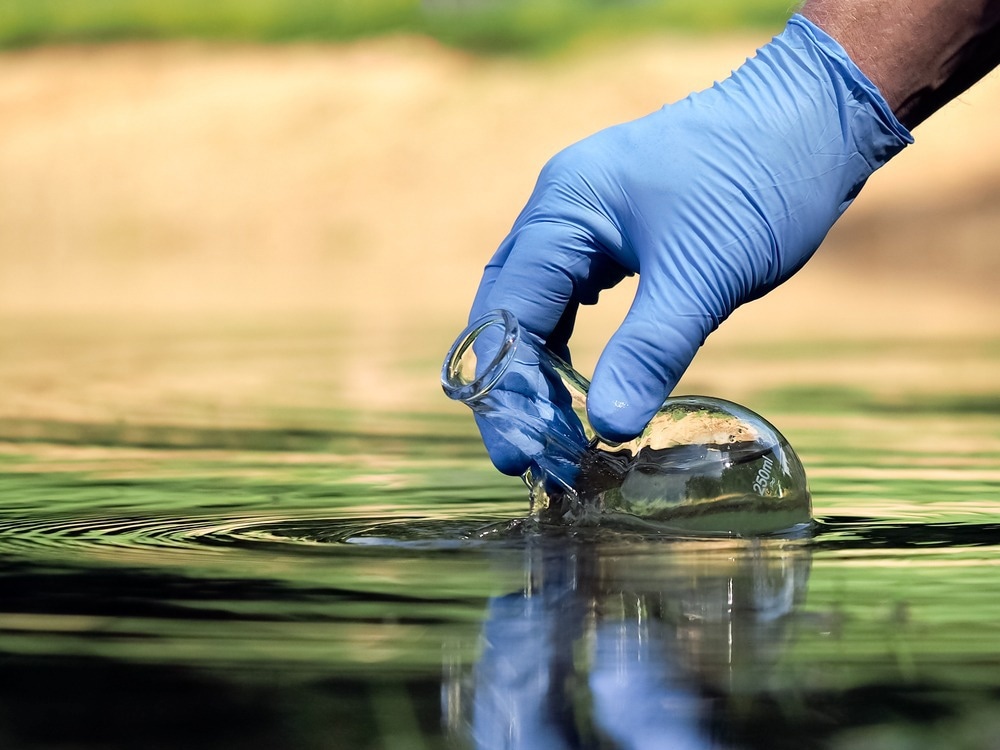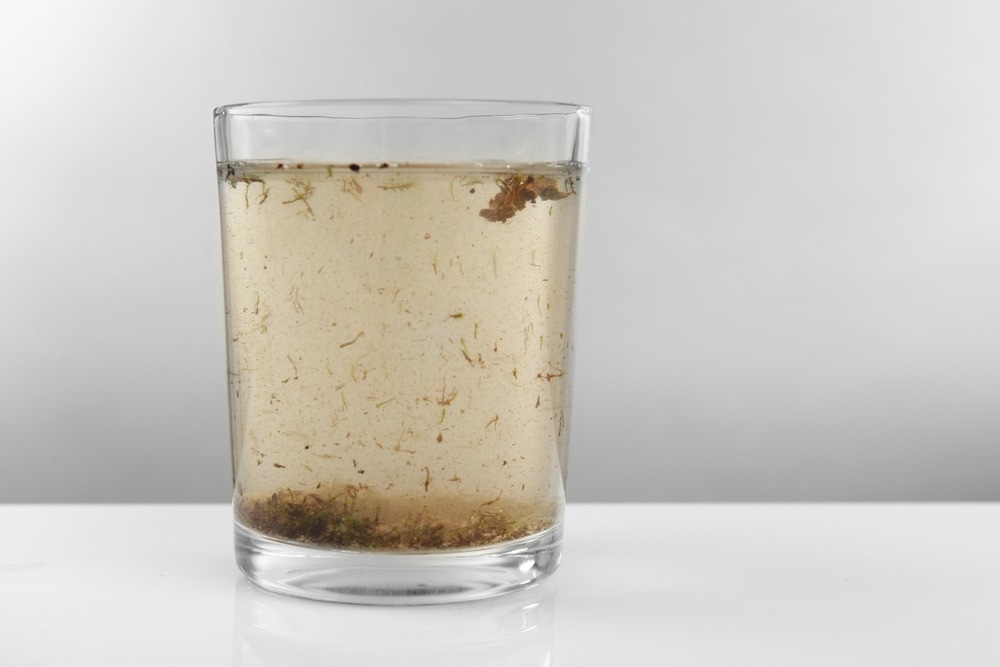Since its early developments, analytical chemistry has been used to assess water quality and determine its components. From understanding the functioning of aquatic systems to addressing challenges caused by pollution, analytical chemistry has always played a key role in maintaining water as a vital resource.

Image Credit: Irina Kozorog/Shutterstock.com
Chemical analysis of water can help evaluate the extent of certain problems and lay the basis for understanding and solving them. Examples include tackling freshwater eutrophication (affecting many areas worldwide) or pollution by pesticides and polycyclic aromatic hydrocarbons (PAHs).
Water can be grouped into three main categories: environmental, industrial process, and drinking. Depending on the specific use, chemical analysis is used to inform policies and regulations determining water quality levels.
What Parameters can be Analyzed?
Analytical chemistry is used to identify and quantify water samples' chemical components and properties. Depending on the species to be measured – inorganic and organic – or the purpose of the analysis and the water use, there are various techniques available.
Water analysis can, in fact, investigate different properties and parameters that can be physical (temperature, color, turbidity), chemical (presence of metals and chemicals), or microbiological (contamination with bacteria and viruses).
The range of analytical techniques encompasses various sample preparation protocols, chemical methods – namely titrations, separations, electrochemical and spectroscopic measurements – and biological methods (i.e., biosensors).
Typical tests aim at measuring the following parameters to determine water quality:
- pH – controls the distribution of chemical species in various forms. In animal cells, for example, water pH is buffered at precise values to maintain the functionality of proteins and enzymes
- Hardness – due to calcium and magnesium salts (mainly carbonates and bicarbonates, but also chlorides and sulfates). Hard waters are not suitable for industrial processes and can cause damage to pipes and equipment
- Conductivity – the ability of water to conduct an electrical current. It is important because it is an indicator of how much substances, chemicals, and minerals are dissolved in the water
- Dissolved oxygen – a vital component in determining the health of aquatic systems.
The analysis of several types of ions provides useful information. For instance, chloride (Cl-) concentration indicates water contamination. Moreover, a high Cl concentration makes the water salty and corrodes pipelines. An increased ammonia concentration indicates the decomposition of organic matter like proteins and amino acids.
Phosphates come from agricultural waste and sewage and are normally present as H2PO4-, polyphosphate, and organic phosphate. Although it is not toxic to humans, phosphate is an important chemical in natural water systems (i.e., ponds) because high concentrations promote eutrophication.
In addition, since the late 1970s, the interest has shifted dramatically from analyzing major ions to determining (micro)organisms, particles, and organic micropollutants (OMPs).
Routine Analytical Methods for Water Analysis
Inductively coupled plasma-mass spectrometry (ICP-MS) is an excellent analytical technique for water analysis. Thanks to the possibility to perform rapid multi-element analysis, ICP-MS can survey a large number of elements with excellent detection limits, and it is widely used for routine analysis of water samples.
It is possible to obtain information on trace elements occurring in water up to sub-μg/L concentrations. The detection limits are appropriate for the elements indicated in legislation, such as B, Al, P, and heavy metals, including Cr, Fe, Ni, As, Cd, and Pb, to name a few.
Ion chromatography (IC) is another well-established analytical technique for water analysis. IC allows the determination of several anions, such as fluoride, chloride, nitrate, sulfate, and cations (including ammonium), with detection limits in the parts-per-billion (ppb) range.
The technique can be used for separation and quantification; it is sensitive and reliable, with good reproducibility. There are many different separation columns available depending on the type of application, and methods can be fully automated. For these reasons, IC is accepted by many organizations and regulatory bodies as the reference method for water analysis.

Image Credit: Africa Studio/Shutterstock.com
Novel Techniques for the Analysis of Novel Contaminants
In addition to ICP-MS and IC, other analytical techniques regularly used in water analysis are gas chromatography (GC) or liquid chromatography (LC) separations in combination with mass spectrometry (MS) detectors. These methods are well established for the selective and sensitive determination of known target analytes.
However, the necessity of reference standards in the above-mentioned techniques poses limitations in identifying new analytes where standards are unavailable (i.e., polyfluoroalkylated substances – PFASs, disinfection byproducts – DBPs).
To overcome this problem, high-resolution mass spectrometry (HRMS) has become a popular alternative in water analysis without the need for reference standards. More studies focus on obtaining accurate mass data for fragment ions and proposing tentative structures for unknown analytes such as halogenated compounds (including PFASs and brominated DBPs).
With the increasing concerns over the still largely unexplored health and environmental impacts of organic micropollutants in water, novel screening procedures, methods, and guidance on results interpretations are under development.
Challenges and Future Trends
Over the years, the main themes concerning refining current methods or developing new techniques have always been related to improving speed and selectivity, elaborating new sample preparation methods, and lowering the limits of detection.
Other main requirements are demands for shorter analysis times and high throughput analysis by automation. In particular, the need for non-expensive and reliable methods is more critical in the case of developing countries, where the purchase and maintenance of analytical equipment can be extremely difficult.
Sources:
- Filella, M. (2013). Food for Thought: A Critical Overview of Current Practical and Conceptual Challenges in Trace Element Analysis in Natural Waters. Water, 5, 1152-1171.10.3390/w5031152
- Fernández-Turiel, J. L., Llorens, J. F., López-Vera, F., Gómez-Artola, C., Morell, I. & Gimeno, D. (2000). Strategy for water analysis using ICP-MS. Fresenius' Journal of Analytical Chemistry, 368, 601-606.10.1007/s002160000552
- Michalski, R. (2018). Ion Chromatography Applications in Wastewater Analysis. Separations, 5, 16.10.3390/separations5010016
- Schmidt, T. C. (2018). Recent trends in water analysis triggering future monitoring of organic micropollutants. Anal Bioanal Chem, 410, 3933-3941.10.1007/s00216-018-1015-9
Further Reading
Last Updated: Dec 13, 2022